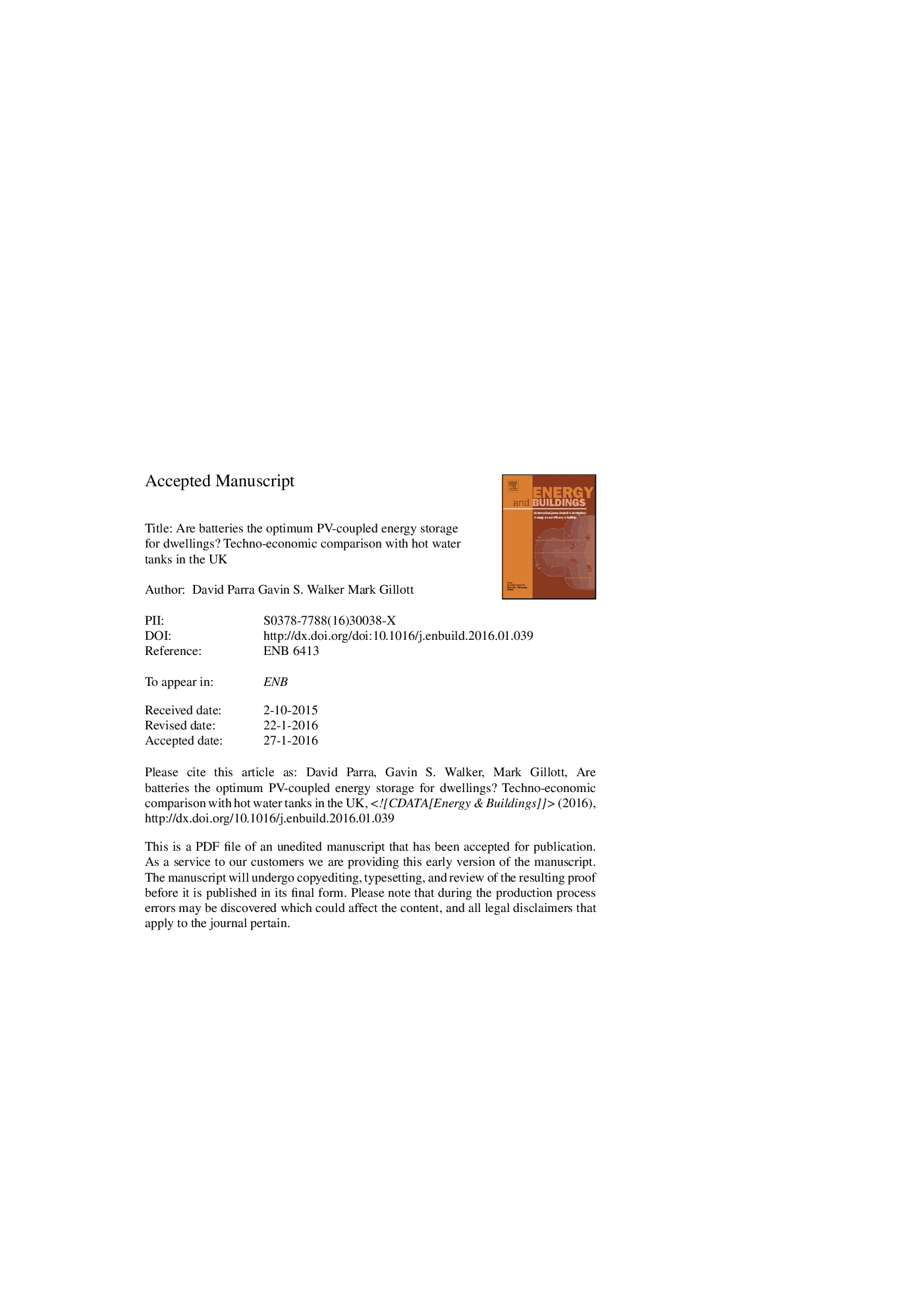| کد مقاله | کد نشریه | سال انتشار | مقاله انگلیسی | نسخه تمام متن |
|---|---|---|---|---|
| 6730564 | 504021 | 2016 | 19 صفحه PDF | دانلود رایگان |
عنوان انگلیسی مقاله ISI
Are batteries the optimum PV-coupled energy storage for dwellings? Techno-economic comparison with hot water tanks in the UK
دانلود مقاله + سفارش ترجمه
دانلود مقاله ISI انگلیسی
رایگان برای ایرانیان
موضوعات مرتبط
مهندسی و علوم پایه
مهندسی انرژی
انرژی های تجدید پذیر، توسعه پایدار و محیط زیست
پیش نمایش صفحه اول مقاله

چکیده انگلیسی
Growing support to decarbonise energy systems together with increasing retail energy prices are converting self-generation into a more attractive energy supply option. At the consumption level, solar PV is the most widespread generation technology due to declining capital costs, modularity and easy maintenance. The intrinsic dependence of solar energy generation on weather patterns and conditions affects the performance, final supply to the local demand load (i.e. local self-consumption) and final revenue. Energy storage is an available technological option to increase the value of local PV generation by increasing the self-consumption of PV-generated electricity. Therefore, understanding the performance, cost, value and optimum energy storage technology for managing PV generation is a key aspect for current and new customers with rooftop PV installations. In this study, energy storage for single homes is optimised by quantifying the performance, levelised cost, levelised value and profitability of hot water tanks (supplying domestic hot water), lead-acid batteries and lithium-ion batteries (supplying electricity). Although the assumed storage medium cost for Li-ion batteries (350 £/kWh) was 2.5 times higher than that of PbA batteries (140 £/kWh), Li-ion technology's greater round trip efficiency and cycling capability resulted in lower levelised cost (0.37 £/kWh) and higher levelised value (0.15 £/kWh) than PbA technology. The best economic case was for hot water tanks with a size ranging between 100 l and 200 l which were able to achieve internal rate of return values higher than the assumed discount factor (4%), especially when the property already had a hot water tank and domestic hot water was previously met by using retail electricity.
ناشر
Database: Elsevier - ScienceDirect (ساینس دایرکت)
Journal: Energy and Buildings - Volume 116, 15 March 2016, Pages 614-621
Journal: Energy and Buildings - Volume 116, 15 March 2016, Pages 614-621
نویسندگان
David Parra, Gavin S. Walker, Mark Gillott,